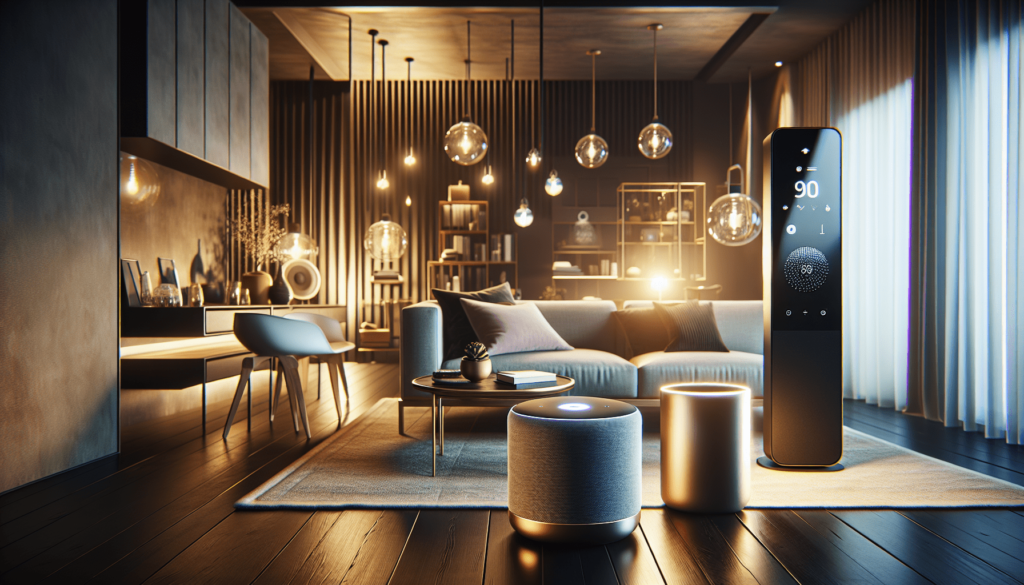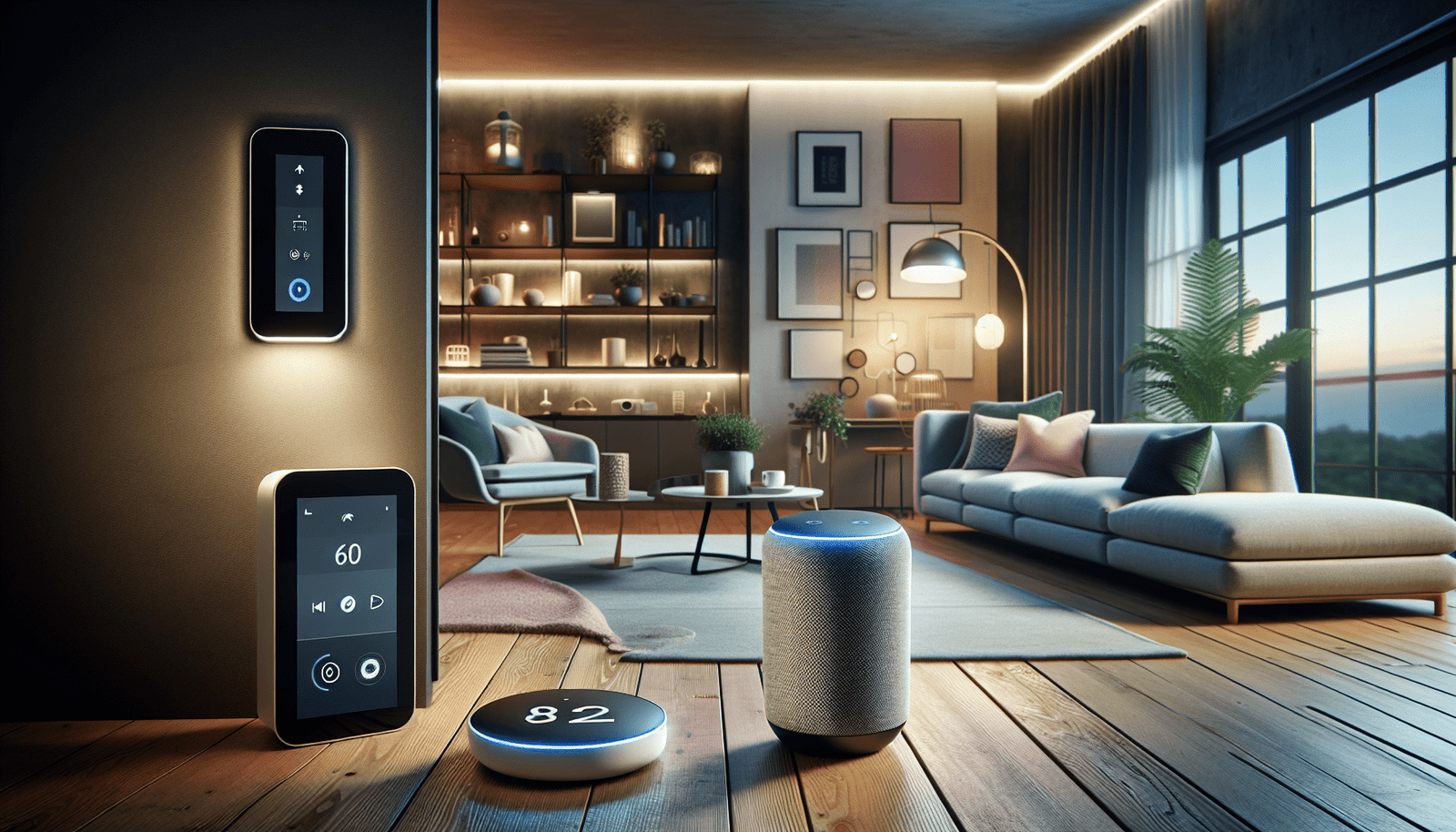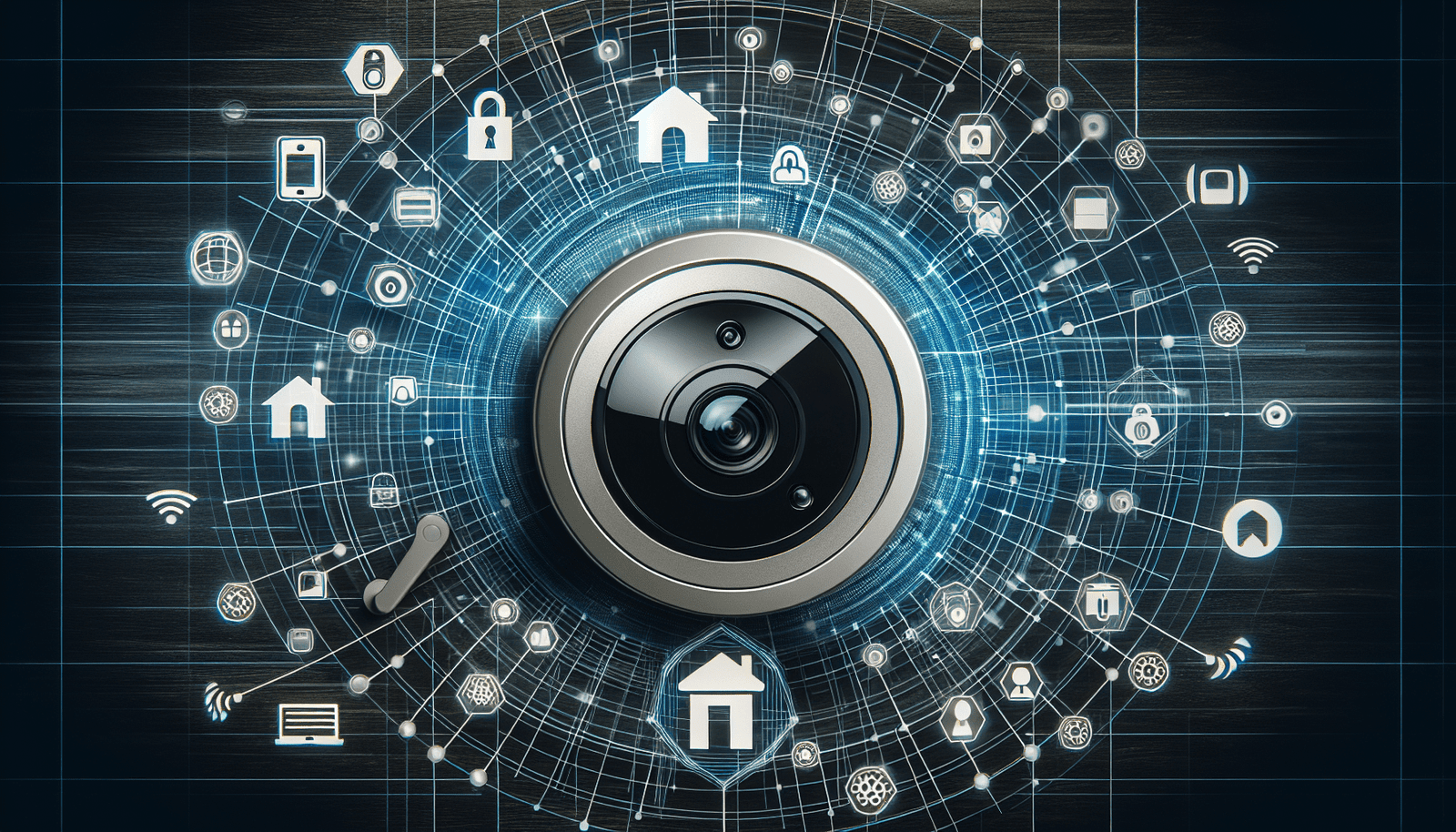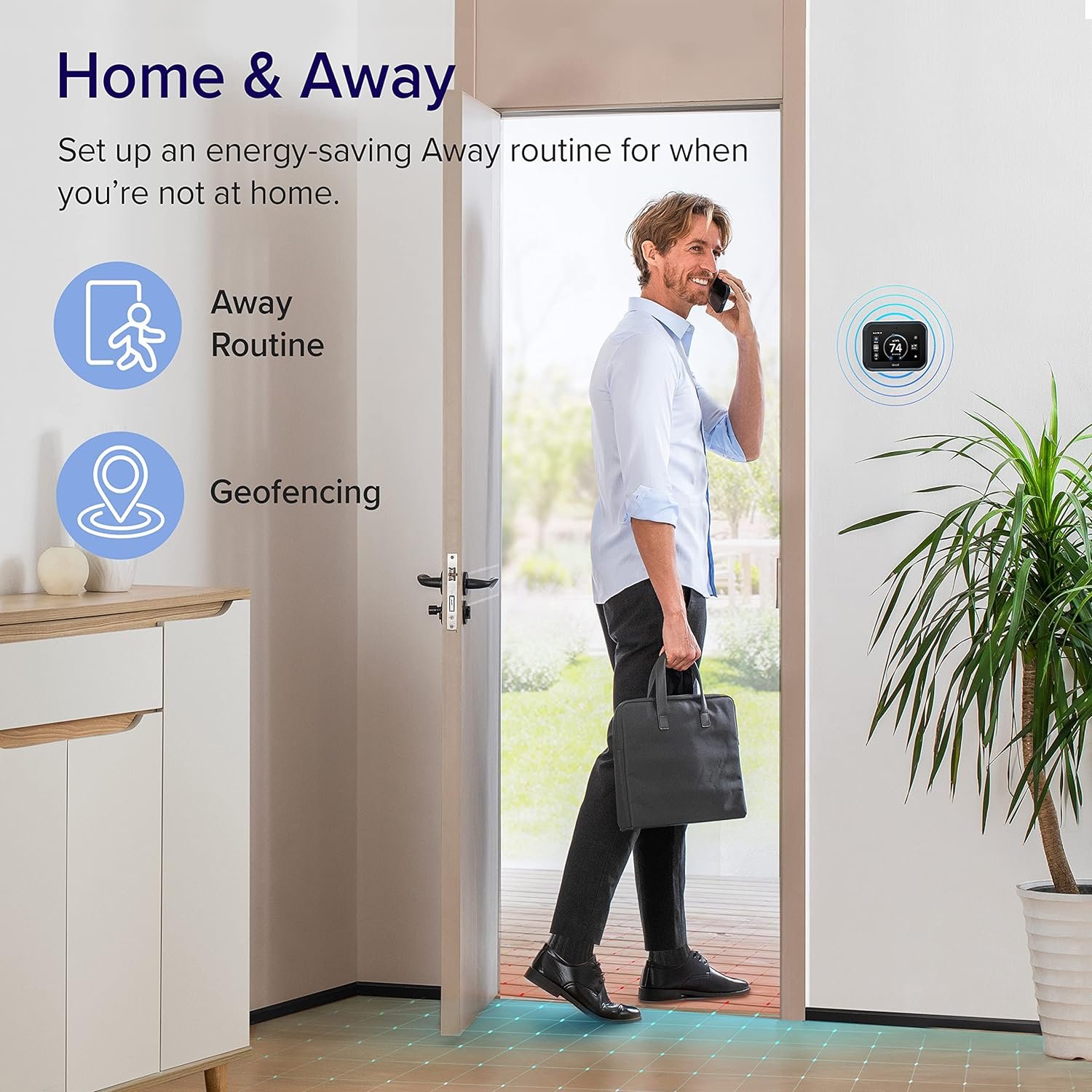Have you ever considered making your home “smart”? With a wealth of options available, ensuring that you choose the right devices tailored to your specific needs can feel overwhelming. Whether you’re a homeowner or a renter, the journey toward a technologically integrated living space can be exciting and rewarding. Let’s break down how you can select the best smart home devices for your situation.

What is a Smart Home?
A smart home integrates technology into household devices that can be controlled remotely via the internet, enhancing convenience and security. Devices like smart speakers, thermostats, cameras, and lights can be managed through your smartphone or smart assistant, creating an interconnected system that offers multiple benefits.
Why Consider Smart Home Devices?
Smart home technology simplifies your life by automating daily tasks, improving energy efficiency, and enhancing security. For example, imagine adjusting your thermostat from your phone before you get home or receiving alerts when someone approaches your front door. These devices not only offer convenience but also create a connected environment that responds to your lifestyle.
Understanding Your Needs
Before investing in smart home devices, it’s paramount to assess what you truly need. Consider the following:
- Purpose: Are you looking for convenience, security, energy savings, or a combination?
- Compatibility: Do you want devices that work together seamlessly?
- Budget: How much are you willing to invest initially and in the long run?
Defining Your Goals
Identifying what you want to achieve will guide your choices. For example, if your goal is to lower energy costs, smart thermostats and smart lighting systems may be your top choices. Conversely, if security is your primary concern, you might prioritize smart cameras and doorbells.
The Cost of Smart Home Devices
Initial Investment
Smart home devices can range from affordable options to high-end products. Understanding the initial costs is crucial. Here’s a general breakdown of smart home device prices:
| Device Category | Price Range |
|---|---|
| Smart Speakers | $50 – $300 |
| Smart Cameras | $100 – $400 |
| Smart Thermostats | $100 – $250 |
| Smart Light Bulbs | $10 – $50 each |
| Smart Plugs | $15 – $40 each |
Long-Term Savings
While the initial investment can be significant, consider the long-term savings associated with energy-efficient devices. For example, smart thermostats can typically save homeowners 10-15% on their energy bills annually. This investment can provide a return over time, making it more worthwhile.
Comparison of Popular Smart Home Devices
Understanding various options and their features can help you make informed choices. Here’s a quick comparison of popular categories of smart devices:
| Device Type | Key Features | Pros | Cons |
|---|---|---|---|
| Smart Speakers | Voice command, music streaming | Hands-free control, multi-room audio | May require a learning curve |
| Smart Thermostats | Remote access, energy reports | Energy savings, personalized schedules | Higher upfront cost |
| Smart Cameras | Live streaming, alerts | Enhanced security, remote monitoring | Privacy concerns |
| Smart Lights | Dimming, color-changing | Customizable ambiance, energy-efficient | Requires compatible hub |
This table helps you quickly identify which devices are best suited for your needs.

Practical Setup Guides
Installing Smart Devices
Setting up smart home devices can vary based on the type of product. Here’s a general guide to get you started:
- Read the Instructions: Always begin by reading the device manual for specific guidelines.
- Download the Required App: Most smart devices have an associated app for easy control.
- Connect to Wi-Fi: Ensure your device connects to a stable Wi-Fi network for optimal performance.
- Follow Setup Prompts: The app will guide you through initial setup, pairing devices, and customization options.
- Test Functionality: Once set up, test to ensure everything works as expected.
Integrating Multiple Devices
If you’re planning to create a full-fledged smart home, consider using a smart hub to integrate multiple devices. This can greatly enhance your experience by allowing seamless communication between devices.
Security and Privacy
Understanding Risks
With any technology, security and privacy are significant concerns. Smart devices can present vulnerabilities if not properly secured. Here are some best practices to ensure a higher level of security:
- Change Default Settings: Always change default passwords on your devices to something unique.
- Regular Updates: Keep your devices updated to patch vulnerabilities.
- Network Security: Use strong Wi-Fi encryption and consider setting up a guest network for smart devices.
Safety Features
Many smart devices come with built-in security features, such as end-to-end encryption and two-factor authentication, to help protect your data. Be sure to select devices from reputable brands known for their commitment to consumer safety.
Energy Efficiency and Sustainability
How Smart Devices Contribute
Smart home technology can play a vital role in reducing energy consumption. Here are a few examples:
- Smart Thermostats: Automatically adjust heating and cooling based on your schedule.
- Smart Lights: Allow you to schedule lights to turn off automatically when not needed.
- Smart Plugs: Help monitor and cut power to devices when they are not in use.
Benefits to the Environment
Not only do these devices help reduce your bills, but they also contribute positively to the environment. By optimizing energy use, smart devices help decrease overall demand on power plants, leading to lower emissions and a smaller carbon footprint.
Compatibility and Connectivity
Working Together
It’s essential to consider how different devices will communicate with each other. Many smart devices use one of two protocols: Wi-Fi or Zigbee. Understanding the differences can help you choose compatible devices:
- Wi-Fi: Offers a straightforward setup but may require more bandwidth.
- Zigbee: Uses less power and creates a mesh network, allowing for more devices to connect without overloading your Wi-Fi.
Smart Assistants
Most smart devices are compatible with popular smart assistants like Amazon Alexa, Google Assistant, or Apple HomeKit. This compatibility allows you to control various devices using simple voice commands, increasing convenience and ease of use.
Future-Proofing and Innovation
Staying Ahead of the Curve
The smart home industry is evolving rapidly, with new devices and features continually being introduced. When choosing devices, consider options that can be upgraded or expanded.
Emerging Trends
Keep an eye out for trends such as:
- Artificial Intelligence: Devices that learn your habits and preferences to optimize their performance.
- Home Automation: The ability to create automated routines where multiple devices work together.
- Integration with IoT: Devices that connect with other internet-enabled technology to increase functionality.
Addressing Common Questions
What are the benefits of a smart home?
Smart homes provide convenience, enhanced security, energy savings, and improved quality of life. They can automate everyday tasks, monitor your home remotely, and even alert you to unusual activity.
Are smart home devices easy to install?
Most smart home devices are designed for easy installation, often requiring little technical expertise. Follow the provided instructions, and you’ll likely have them set up in no time.
How much do smart home devices cost?
The cost of smart home devices varies significantly. A smart light bulb might cost as little as $10, while advanced security cameras can be upwards of $400. Weigh initial costs against potential long-term savings to understand their value.
Are smart home devices secure?
While there are risks, many manufacturers implement robust security measures, such as encryption. Following basic security practices can help protect your smart home.
Can I use smart devices if I’m renting?
Absolutely! Many smart devices are non-permanent solutions, such as smart plugs and bulbs, which can be easily removed when it’s time to move.
Conclusion
Choosing the best smart home devices for your needs involves understanding your goals, evaluating compatibility, and considering both upfront and long-term costs. With the right approach, you can create a connected environment that enhances your daily life—increasing convenience, improving energy efficiency, and providing peace of mind. As technology continues to evolve, staying informed will help you make confident decisions and enjoy the many benefits that smart home living offers. By starting small and expanding thoughtfully, you can pave the way to a smarter, more efficient home that reflects your unique lifestyle.




